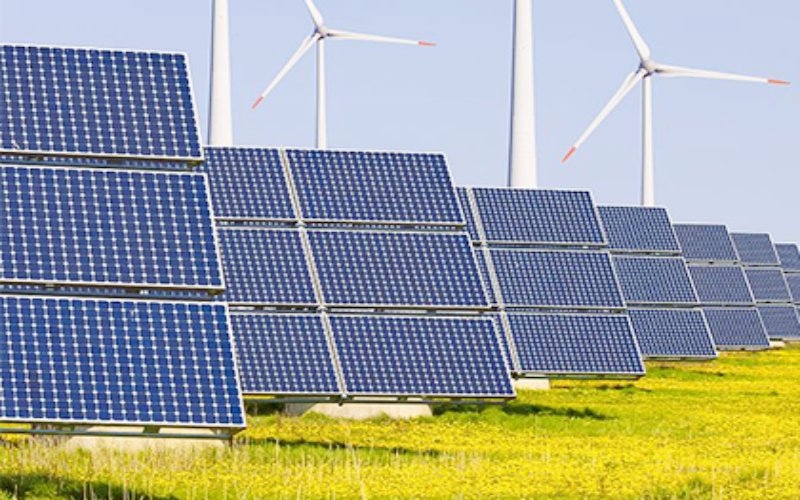The rapid evolution of electronics has been significantly influenced by advances in nanotechnology in electronics. This cutting-edge field has opened new possibilities for the design, development, and enhancement of electronic devices. Nanotechnology in electronics allows us to build smaller, faster, and more efficient gadgets, transforming industries ranging from consumer electronics to healthcare. Let’s dive deeper into how nanotechnology is revolutionizing electronics and shaping the future.
What is Nanotechnology?
Nanotechnology refers to the science, engineering, and application of materials at a nanoscale level, typically between 1 and 100 nanometers. At this scale, the physical, chemical, and biological properties of materials change, opening up new opportunities for innovation. When applied to electronics, nanotechnology in electronics manipulates atoms and molecules to create components and systems that outperform traditional technologies.
The Role of Nanotechnology in Electronics
In electronics, nanotechnology in electronics allows for the miniaturization of components, which improves the performance, energy efficiency, and capabilities of devices. This technology focuses on developing nanoscale transistors, sensors, and memory storage devices that can push the boundaries of traditional electronic designs.
Applications of Nanotechnology in Electronics
1. Transistors and Processors
One of the most significant applications of nanotechnology in electronics is the development of nanoscale transistors.Modern electronics are built on transistors, which may be shrunk to the nanoscale to create computers that are more compact, quick, and potent.
FinFET Technology
FinFET (Fin Field Effect Transistor) is a key example of nanotechnology in electronics. This design, used in modern CPUs, allows for more efficient power consumption and higher performance compared to traditional planar transistors. As technology companies strive to create more powerful processors, nanotechnology is leading the charge.
2. Nanosensors
Nanotechnology has paved the way for the creation of highly sensitive and accurate sensors, which are critical in electronics. Nanosensors can detect minute changes in the environment, making them invaluable in medical diagnostics, environmental monitoring, and consumer electronics.
For example, in wearable technology, nanotechnology in electronics has enabled the production of sensors that can monitor heart rates, oxygen levels, and other health metrics with greater precision.
3. Quantum Dots
Quantum dots are another application of nanotechnology in electronics that is making waves in the world of displays. These semiconductor particles, only a few nanometers in size, have unique optical and electronic properties. In displays, quantum dots are used to produce brighter colors, improve energy efficiency, and deliver better image quality.
4. Memory and Storage
Nanotechnology in electronics is also transforming the way we store data. Traditional memory devices are reaching their physical limits, but nanotechnology offers alternatives like nanoscale memory chips. These chips can store more data in a smaller space, improve read and write speeds, and reduce power consumption.
3D NAND Memory
A prime example of this is 3D NAND technology, which stacks memory cells vertically to increase storage density. This innovation has been made possible through advances in nanotechnology in electronics, allowing for the continued growth of data storage capacity while maintaining smaller physical footprints.
Benefits of Nanotechnology in Electronics
1. Miniaturization and Portability
One of the primary advantages of nanotechnology in electronics is miniaturization. As electronic components become smaller, devices can be more portable without sacrificing power or performance. This trend is evident in the shrinking size of smartphones, laptops, and other consumer gadgets.
2. Improved Performance and Efficiency
Nanotechnology enables the creation of faster and more efficient devices. Transistors, memory storage, and sensors built with nanoscale materials can handle greater workloads, process data more quickly, and use less power. This is particularly important in today’s world, where energy efficiency is a major concern.
3. Enhanced Durability
Nanotechnology can also improve the durability and longevity of electronic components. Nanomaterials often have superior mechanical properties, such as greater resistance to wear, corrosion, and temperature fluctuations, leading to more reliable and long-lasting electronics.
Challenges Facing Nanotechnology in Electronics
While nanotechnology in electronics holds great promise, it also comes with challenges that must be addressed for widespread adoption.
1. Manufacturing Complexity
Nanoscale component fabrication calls for extremely specialized tools and procedures.Scaling up nanotechnology-based manufacturing for mass production can be both costly and complex, limiting the availability of certain nanotechnology-enabled products.
2. Environmental Impact
Nanomaterials, while beneficial in many applications, may have unknown long-term effects on the environment. The production and disposal of electronic devices containing nanomaterials raise concerns about the potential release of nanoparticles into the ecosystem, which could have unintended consequences.
3. Ethical and Safety Concerns
The use of nanotechnology in electronics, particularly in medical devices, raises ethical questions about privacy and safety. As nanosensors become more integrated into everyday life, ensuring that sensitive data is securely managed and that the technology does not pose health risks is crucial.
The Future of Nanotechnology in Electronics
Nanotechnology in electronics appears to have a very bright future. As technology continues to evolve, we can expect to see even more innovative applications that will change the way we live and work.
1. Flexible and Wearable Electronics
Flexible electronics, made possible by nanotechnology, are poised to revolutionize industries ranging from healthcare to fashion. Wearable devices that are lightweight, flexible, and capable of monitoring health metrics in real-time could soon become commonplace, offering new ways to track and improve wellness.
2. Nanoelectronics in Artificial Intelligence
Nanotechnology will play a critical role in advancing artificial intelligence (AI). The development of nanoscale transistors and memory chips will allow AI systems to process larger amounts of data at faster speeds, making them more powerful and efficient.
3. Environmental Monitoring
Nanosensors will be instrumental in environmental monitoring, helping to detect pollutants, monitor air and water quality, and track changes in ecosystems. Nanotechnology in electronics could provide real-time data that helps us make informed decisions to protect the planet.
Conclusion
In conclusion, nanotechnology in electronics is transforming the landscape of modern technology. From faster processors to flexible devices, the possibilities are vast and exciting. While challenges remain, the continued development of nanotechnology promises a future where electronic devices are smaller, more powerful, and more efficient than ever before. As we embrace this technology, the benefits to industries like healthcare, consumer electronics, and environmental monitoring will only grow, making nanotechnology in electronics a cornerstone of future innovations.
Also visit on techitl.com.




